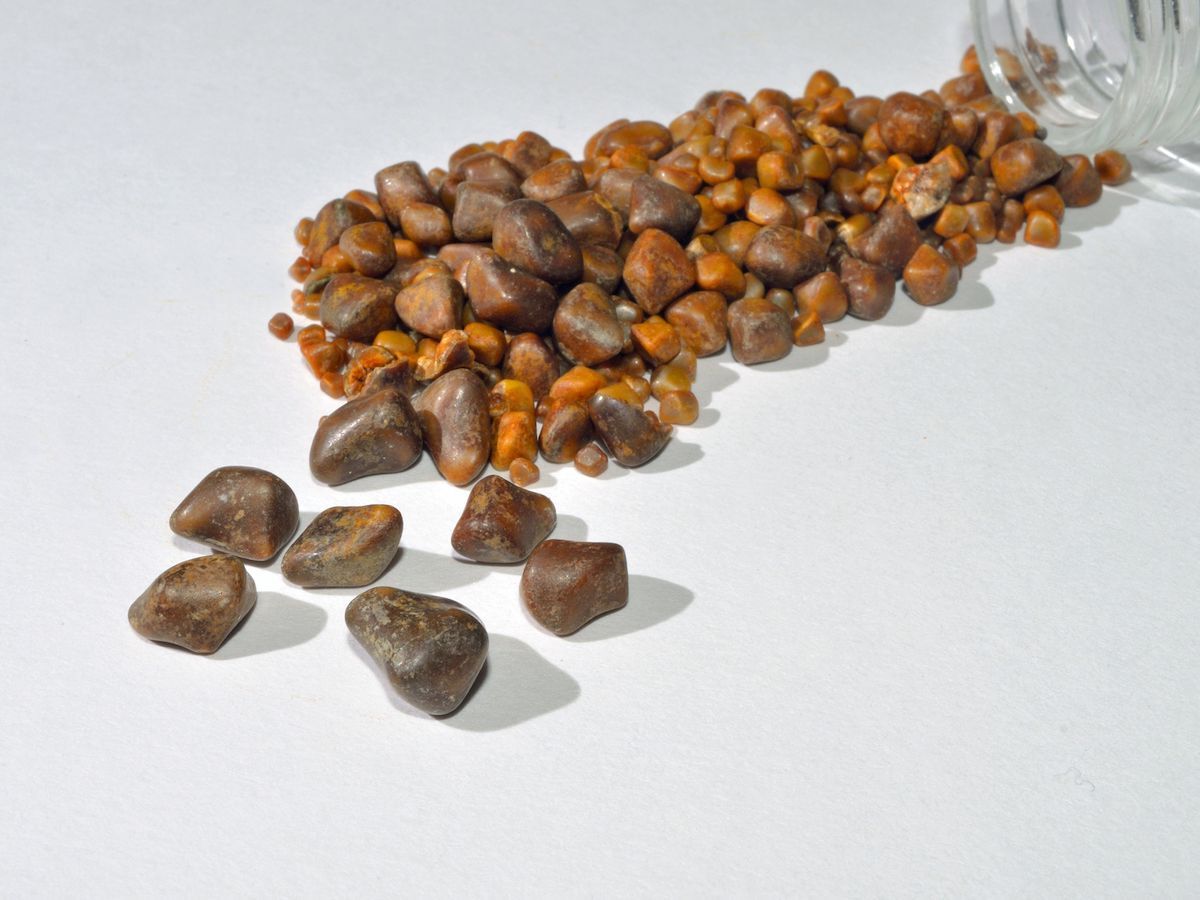
Gallstones are small, hard deposits that form in the gallbladder, a small organ under the liver. They can be as tiny as a grain of sand or as large as a golf ball. These pesky stones can cause severe pain, especially if they block a bile duct. Gallstones are made of cholesterol or bilirubin, a substance from red blood cells. Risk factors include obesity, a high-fat diet, and certain medical conditions. Symptoms might include sudden pain in the upper right abdomen, nausea, and vomiting. Sometimes, people have gallstones without any symptoms. Treatment options range from medication to surgery. Understanding these facts can help you manage and prevent gallstones effectively.
What Are Gallstones?
Gallstones are hardened deposits that form in the gallbladder, a small organ under the liver. They can be as small as a grain of sand or as large as a golf ball. Here are some fascinating facts about gallstones.
- Gallstones can be made of cholesterol or bilirubin.
- Cholesterol gallstones are the most common type.
- Pigment gallstones are darker and made of bilirubin.
- Gallstones can be asymptomatic, meaning no symptoms.
- They can cause severe pain if they block bile ducts.
Causes of Gallstones
Understanding what causes gallstones can help in prevention and treatment. Various factors contribute to their formation.
- High cholesterol levels in bile can lead to gallstones.
- Excess bilirubin in bile can also cause them.
- The gallbladder not emptying properly can result in gallstones.
- Obesity increases the risk of developing gallstones.
- Rapid weight loss can also trigger gallstone formation.
Symptoms of Gallstones
Recognizing the symptoms of gallstones is crucial for timely medical intervention. Symptoms can vary widely among individuals.
- Severe pain in the upper right abdomen is a common symptom.
- Pain can radiate to the back or right shoulder.
- Nausea and vomiting often accompany gallstone pain.
- Jaundice, or yellowing of the skin and eyes, can occur.
- Fever and chills may indicate a gallstone infection.
Diagnosing Gallstones
Medical professionals use various methods to diagnose gallstones. Accurate diagnosis is essential for effective treatment.
- Ultrasound is the most common diagnostic tool.
- CT scans can also detect gallstones.
- MRI can provide detailed images of the bile ducts.
- Blood tests can reveal signs of infection or jaundice.
- Endoscopic retrograde cholangiopancreatography (ERCP) can diagnose and treat gallstones.
Treatment Options for Gallstones
There are several ways to treat gallstones, ranging from medication to surgery. The choice of treatment depends on the severity of symptoms and the size of the stones.
- Medications can dissolve cholesterol gallstones.
- Lithotripsy uses shock waves to break up gallstones.
- Laparoscopic cholecystectomy is a common surgical procedure.
- Open cholecystectomy is another surgical option.
- ERCP can remove stones from bile ducts.
Risk Factors for Gallstones
Certain factors increase the likelihood of developing gallstones. Knowing these risk factors can help in taking preventive measures.
- Women are more likely to develop gallstones than men.
- People over 40 are at higher risk.
- Family history of gallstones increases risk.
- Pregnancy can trigger gallstone formation.
- High-fat diets contribute to gallstone risk.
Preventing Gallstones
Prevention is always better than cure. Simple lifestyle changes can significantly reduce the risk of developing gallstones.
- Maintaining a healthy weight is crucial.
- Regular exercise can help prevent gallstones.
- Eating a high-fiber diet is beneficial.
- Avoiding rapid weight loss can reduce risk.
- Drinking plenty of water helps keep bile thin.
Complications from Gallstones
Gallstones can lead to serious complications if not treated. Awareness of these complications can prompt timely medical attention.
- Acute cholecystitis is a painful inflammation of the gallbladder.
- Pancreatitis can occur if a stone blocks the pancreatic duct.
- Gallstones can cause bile duct infections.
- Gallbladder cancer is a rare but possible complication.
- Gallstone ileus is a bowel obstruction caused by a gallstone.
Interesting Facts About Gallstones
Here are some lesser-known facts about gallstones that might surprise you.
- Gallstones have been found in Egyptian mummies.
- They are more common in Native American populations.
- Certain medications can increase the risk of gallstones.
- Gallstones can sometimes pass on their own without treatment.
- They are more common in people with diabetes.
Myths and Misconceptions About Gallstones
There are many myths surrounding gallstones. Let's clear up some common misconceptions.
- Gallstones are not always caused by a poor diet.
- Not everyone with gallstones needs surgery.
- Gallstones can occur in people of any age.
- Herbal remedies are not always effective in treating gallstones.
- Gallstones do not always cause symptoms.
Final Thoughts on Gallstones
Gallstones can be a real pain, literally. These pesky stones form in the gallbladder and can cause serious discomfort. Knowing the symptoms like sudden pain in the upper right abdomen, nausea, and vomiting can help you catch them early. Risk factors include obesity, a high-fat diet, and even genetics. Treatments range from medication to surgery, depending on the severity. Preventing gallstones involves maintaining a healthy diet, staying active, and keeping an eye on your weight. If you suspect you have gallstones, consult a healthcare professional for proper diagnosis and treatment. Understanding these facts can help you manage or even avoid gallstones altogether. Stay informed and take care of your health to keep those gallstones at bay.
Was this page helpful?
Our commitment to delivering trustworthy and engaging content is at the heart of what we do. Each fact on our site is contributed by real users like you, bringing a wealth of diverse insights and information. To ensure the highest standards of accuracy and reliability, our dedicated editors meticulously review each submission. This process guarantees that the facts we share are not only fascinating but also credible. Trust in our commitment to quality and authenticity as you explore and learn with us.


